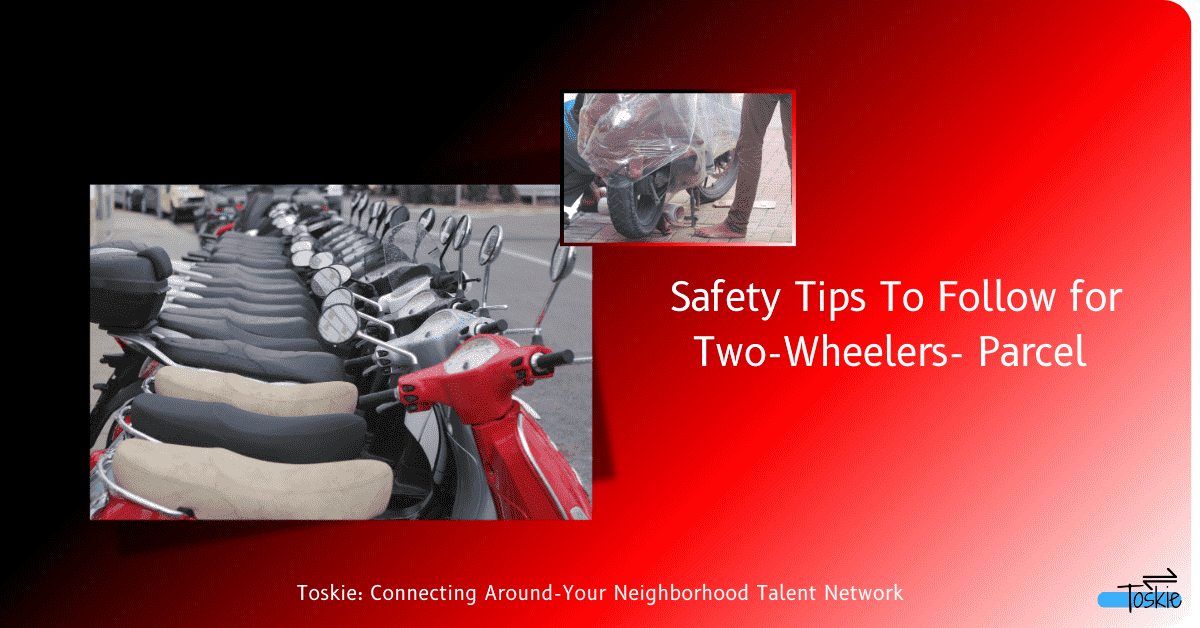Packing and moving your two-wheeler can be a daunting task, especially when you want to ensure that it arrives safely at its destination without a single scratch. Whether you’re moving locally or across the country, proper preparation and packing techniques are crucial to keep your bike secure throughout the process. With the right steps and attention to detail, you can avoid any potential damage and ensure a smooth move. Here are the best packing and moving tips to help you transport your two-wheeler with ease and confidence.
Start Early
The key to successfully moving your two-wheeler is to start early. Packing a bike is not something that should be rushed, as small oversights can lead to big problems. By beginning the process well in advance, you give yourself plenty of time to gather the right packing materials, secure all parts of the bike, and plan your transportation method. An early start also allows you to address any last-minute concerns without feeling overwhelmed. Ideally, start preparing at least a week before your move to ensure everything goes smoothly.
Use Essential Covers
One of the most important protective measures when moving your bike is to use essential covers. A high-quality bike cover shields your two-wheeler from scratches, dust, and weather conditions during transit. A well-fitted, durable cover ensures that your bike’s paint and sensitive parts are protected from damage. If your journey is long, a weather-resistant cover is even more critical, as it protects your bike from rain, sun, and wind exposure.
For added protection, you can wrap key components like mirrors, handlebars, and headlights in bubble wrap before covering the entire bike. This double layer of protection will help prevent minor scratches and dings.
Empty the Fuel Tank
Before moving your two-wheeler, always empty the fuel tank. This is an essential safety precaution, as transporting a bike with a full fuel tank increases the risk of leaks, spills, and even fires. Additionally, an empty tank lightens the weight of the bike, making it easier to handle during loading and unloading. Either siphon the fuel or use it up before the move to ensure the tank is empty.
Moreover, many transport companies will not move a vehicle with fuel inside the tank, so this is a vital step to avoid any delays or complications.
Secure with Packing Tapes
When moving a two-wheeler, certain parts of the bike—such as mirrors, side stands, and handlebars—can shift or get damaged in transit if they are not secured properly. Use packing tapes to secure any loose or movable parts. For example, fold in the mirrors and tape them in place to protect them from damage. Similarly, ensure that handlebars and cables are secured to prevent them from moving around during the journey.
Choose high-quality, durable packing tape that won’t leave sticky residue on your bike’s surface. For delicate areas, wrap them with bubble wrap first before securing them with tape to prevent scratches.
Smart Packing for Extra Protection
Smart packing is crucial to ensure that your bike remains in pristine condition during the move. Focus on packing the most vulnerable areas—like the headlights, mirrors, and tail lamps—by wrapping them securely with bubble wrap or foam sheets. These areas are prone to damage if they meet other objects during transit, so adding a layer of cushioning is important.
If your bike has any expensive custom parts or accessories, give them special attention and, if possible, remove them and pack them separately. Use additional foam padding around sharp edges and sensitive components to prevent accidental scratches and dents.
Proper Positioning for Safe Transport
Correct positioning is another essential factor in ensuring that your two-wheeler remains stable and secure throughout the journey. When loading your bike onto the transport vehicle, make sure it is placed upright and balanced. The bike should not lean to one side or be positioned at an awkward angle, as this could damage parts like the suspension, wheels, or frame.
For added security, use sturdy straps or ropes to keep the bike in place during transit. Professional movers often use wheel chocks or harnesses to prevent the bike from rolling or shifting. If you’re transporting your bike on your own, invest in similar equipment to ensure it stays firmly in position.
Careful Handling of Vehicles
Proper handling of your bike during loading, unloading, and transit is critical to avoid any damage. Use ramps rather than lifting the bike manually, as ramps offer a smoother and safer way to load the vehicle. Manually lifting the bike can cause sudden jerks or slips, leading to potential damage.
If you’re working with professional movers, ensure they have experience handling two-wheelers. Experienced movers use specialized equipment like hydraulic lifts to safely load and unload vehicles without risking damage. Be present during the loading and unloading process to supervise and ensure your bike is handled with care.
Professional packers and movers are experienced in handling vehicles with care. However, it’s always a good idea to inspect their work and provide guidance during the vehicle shifting process to ensure everything goes smoothly.
If you need help finding reliable packers and movers, contact Toskie to get connected to professional packers and movers near you.
Conclusion
Packing and moving your two-wheeler doesn’t have to be a stressful task if you plan and follow these simple steps. Starting early, using the right protective covers, emptying the fuel tank, securing loose parts, packing smartly, positioning the bike correctly, and ensuring careful handling all contribute to a safe and damage-free move. Whether you’re moving the bike yourself or using professional services, taking these precautions will give you peace of mind and keep your two-wheeler in top condition.
Investing the time and effort to follow these best practices will help you avoid costly repairs or unnecessary damage. With the right approach, your bike will arrive at its destination as good as new, ready to hit the road again!
FAQs for Packing and Moving Your Two-Wheeler
Starting early gives you ample time to gather the necessary materials, secure all parts of the bike, and plan your transportation method. This helps prevent rushed decisions and ensures that every detail is addressed, leading to a smoother and less stressful move.
Use a high-quality, durable bike cover that is well-fitted and weather resistant. This will protect your bike from scratches, dust, and weather conditions. For added protection, wrap sensitive parts like mirrors, handlebars, and headlights in bubble wrap before using the cover.
Emptying the fuel tank reduces the risk of leaks, spills, and fire hazards during transit. It also lightens the bike, making it easier to handle during loading and unloading. Additionally, many transport companies require an empty tank for safety reasons.
Use packing tape to secure loose or movable parts such as mirrors, side stands, and handlebars. Fold in and tape down mirrors and ensure that handlebars and cables are fixed in place to prevent movement and potential damage during transit.
Wrap vulnerable areas like headlights, mirrors, and tail lamps with bubble wrap or foam sheets for extra cushioning. If your bike has custom parts, remove and pack them separately. Use additional foam padding around sharp edges and sensitive components.
Place your bike upright and balanced on the transport vehicle. Ensure it is not leaning or positioned at an awkward angle to avoid damage to parts like the suspension and wheels. Secure the bike with sturdy straps or ropes to keep it stable.
Use ramps for loading and unloading your bike to ensure a smooth and safe process. Avoid manually lifting the bike, which can cause jerks and potential damage. If using professional movers, ensure they are experienced with handling two-wheelers and use specialized equipment.
Yes, it’s a good idea to be present during the loading and unloading to ensure your bike is handled with care. If you are using professional movers, confirm that they have experience with two-wheelers and use appropriate equipment to avoid any mishandling.
Address any last-minute concerns by reviewing your packing and transportation plans. Double-check that the bike is securely packed and positioned, and make sure all protective measures are in place. Starting early will help you manage any issues without feeling overwhelmed.
Follow best practices such as starting early, using proper covers, emptying the fuel tank, securing loose parts, packing smartly, positioning the bike correctly, and ensuring careful handling. These steps will help avoid damage and ensure your bike is ready to hit the road again upon arrival.
Packing and Moving Your Two-Wheeler
For expert assistance with all your service needs, call Toskie at 080 6917 9999. Whether you need help with moving, packing, or other professional services, our network of skilled professionals is ready to provide reliable and efficient solutions. Reach out today to connect with the right experts and make your tasks easier!
Book Now
